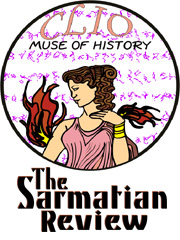| This Issue | Back Issues | Editorial Board | Contact Information |

Polska-Ukraina: 1000 lat sąsiedztwa
Katolickie Unie kościelne w Europie Środkowej i Wschodniej: Idea a rzeczywistośc
Reviewer: Kevin Hannan
Polska-Ukraina: 1000 lat sąsiedztwa
Edited by Stanisław Stępień. Studia z dziejów Greckokatolickiej Diecezji Przemyskiej, vol. 3. Przemysl: Poludniowo-Wschodni Instytut Naukowy, 1996. 336 pages. ISSN 0867-1060. Paper.
Katolickie Unie kościelne w Europie Środkowej i Wschodniej: Idea a rzeczywistość
Edited by Stanisław Stępień. Studia z dziejów Greckokatolickiej Diecezji Przemyskiej, vol. 4. Przemyśl: Południowo-Wschodni Instytut Naukowy, 1998. 465 pages. Color and black-and-white plates. ISSN 0867-1060. Paper. Both volumes are in Polish.
The two volumes at hand represent the most recent in an outstanding series of publications initiated in 1990. Both deal with Poland’s historical role on the borderlands of Western and Eastern Christianity. Due to space limitations, only a few of the fifty-two articles in the two volumes can be mentioned in this review. Both volumes begin by reproducing writings by Pope John Paul II: the 1995 Apostolic Letter marking the 400th anniversary of the Union of Brest (vol. 3), and the 1995 Papal Encyclical Ut unum sint (vol. 4). Vol. 3, which contains the dedication Braciom naszym, którzy mimo prześladowań wytrwali w tradycji cyrilo-metodiańskiej [To our brothers who, despite persecutions, remained faithful to the Cyrilo-methodian tradition] (6) and examines the history of Eastern Christianity in the territory surrounding the city of Przemyśl from the ninth century to the present. August S. Fenczak in “Wokół początków bizantyjsko-słowiańskiego biskupstwa w Przemyślu (koniec XI i pierwsza połowa XII wieku)” looks at the earliest history of that region. Anna Krochmal in “Stosunki międzywyznaniowe i międzyobrzędowe w parafiach greckokatolickiej diecezji przemyskiej w latach 1918-1939” explores interfaith relations in the interwar period, when a Roman Catholic majority and a somewhat smaller Jewish population inhabited the town of Przemyśl, while some two-thirds of the population in the surrounding countryside were Greek (Eastern Rite) Catholic. Iwan Bilas in “Likwidacja greckokatolickiej diecezji przemyskiej oraz tragiczne losy jej ordinariusza bp. Kocyłowskiego w kontekście polityki wyznaniowej ZSRR” examines the destruction of the Przemyśl diocese of the Greek Catholic Church, and the fate of Bishop Józafat Kocyłowski (1916-1947) who was deported to the Soviet Union and died while imprisoned near Kiev. Readers interested in the tragic experiences of the postwar Greek Catholic Church will find ample material in both volumes.
The scope of vol. 4 is somewhat broader, with articles on the Union of Brest; the subsequent history of the Greek Catholic Church among Ukrainians, Belarusians, and Poles; and the current situation of this Church. Paul Robert Magocsi in “Adaptacja bez asymilacji: fenomen greckokatolickiej eparchii w Mukaczewie” examines the various political problems that have faced the Greek Catholic Eparchy of Mukachevo in Subcarpathian Ruthenia. Valuable information on the current situation of the Greek Catholic Church in Ukraine and Belarus is found in Mikolaj Nowosad’s “Sytuacja religijna na współczesnej Ukrainie,” Iwan Hreczko’s “Kościół greckokatolicki na Ukrainie: stan współczesny,” Jacek Nowak’s “Tożsamość religijna grekokatolików na zachodniej Ukrainie-refleksje z najnowszych badań,” and in Uladzimir Nawicki’s “Współczesne odrodzenie Unii na Bialorusi.” As Nowicki points out, the Greek Catholic Church thrives today in western Ukraine (382), but in all of Belarus only eleven Greek Catholic parishes were functioning in 1996. Aspects of religion and identity among Greek Catholics in contemporary Poland are analyzed by Dariusz Wojakowski in “Grekokatolicy-problemy z tożsamością religijną na pograniczu polsko-ukraińskim w dobie obecnej,” and by Christopher Hann in “Grekokatolicy w Przemyślu i regionie w świetle antropologii społecznej.”
Two articles examine details from the life of the Greek Catholic Metropolitan of Lwów/Lviv Andrej Szeptycki (1865-1944): Andrzej A. Zięba’s “Dzieje legendy pośmiertnej metropolity Andrzeja Szeptyckiego wśród Polaków” and Oksana Hajowa’s “Nauka społeczna metropolity Andrzeja Szeptyckiego w świetle materiałów archiwalnych.” Baptized as Roman Szeptycki and raised Roman Catholic in a Polish cultural milieu (though his ancestors by origin were East Slavs and Eastern Christian), the gifted scion of a noble family and the grandson of Polish writer Aleksander Fredro confounded his parents and friends by becoming a Greek Catholic Basilian monk and “changing” his identity from Polish to Ukrainian. Metropolitan Szeptycki remains one of the most intriguing figures of modern Polish and Ukrainian history. In seeking to separate his words and deeds from the slander and negative rumors circulated by the Soviets and by the Polish Right, who vilified him as an extremist and Ukrainian nationalist, Zięba suggests that Andrej Szeptycki was a model for ecumenism and panslavic ethnic reconciliation. Particularly interesting is Zięba’s description of the materials referring to Szeptycki that appeared in the Paris monthly Kultura, among others a book review by Andrzej Vincenz, son of writer Stanisław Vincenz, in which Metropolitan Szeptycki was called a precursor of Pope John XXIII. Members of the Polish Roman Catholic hierarchy, including Primate August Hlond, admired Szeptycki, yet according to Zięba, Hlond’s successor Stefan Cardinal Wyszyński during an ad limina visit to Rome in 1958 took steps to squash the growing movement for beatification, citing “intense national conflicts” as the reason why beatification of Szeptycki should be considered “premature” (295). On Kultura, editor Jerzy Giedroyc, and Polish-Ukrainian relations see also “Pierwszeństwo wyciągniętej dłoni” by Iza Chruślińska, Gazeta Wyborcza, 24-25 April 2004. The evidence suggests that Andrej Szeptycki deserves to be honored as one of the greatest sons of both the Polish and the Ukrainian nations, though for Poles and for Roman Catholics he remains a little-known and misunderstood figure.
Few areas of Polish history are so complicated, so tinged with resentments and a sense of betrayal as Polish-Ukrainian relations. Such extremes of mutual violence and ethnic cleansing that have influenced those relations have been witnessed among other Slavs only in the Balkans. Yet viewing publications such as these and others available today that stress the significance of the shared Polish-Ukrainian historical experience, one indeed feels some optimism about the future of Polish-Ukrainian relations. ∆
Back to the September 2004 Issue
The Sarmatian Review
sarmatia@rice.edu
Last updated 8/30/04